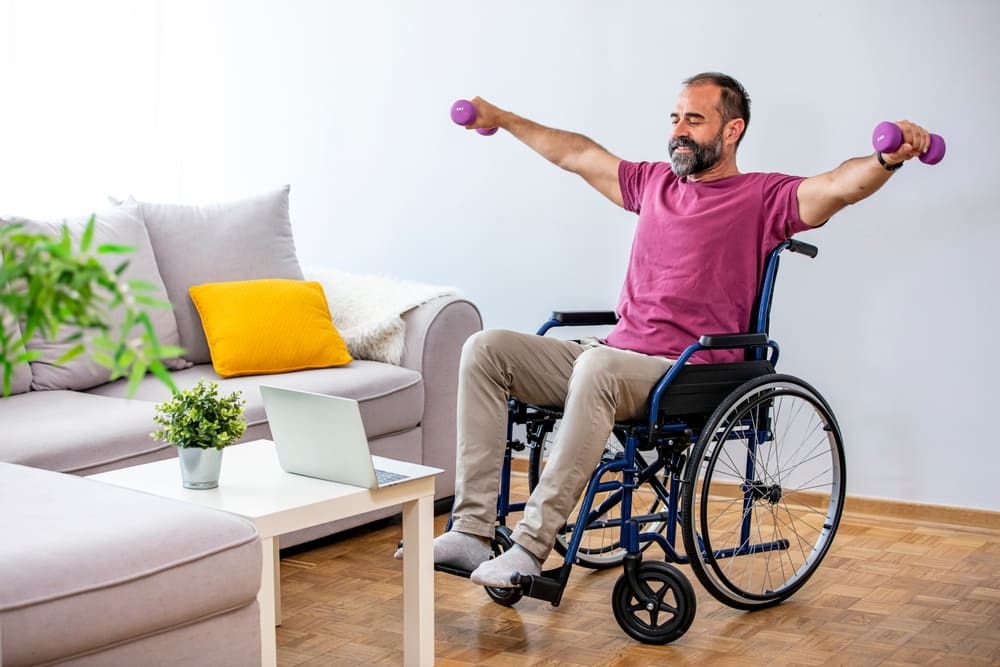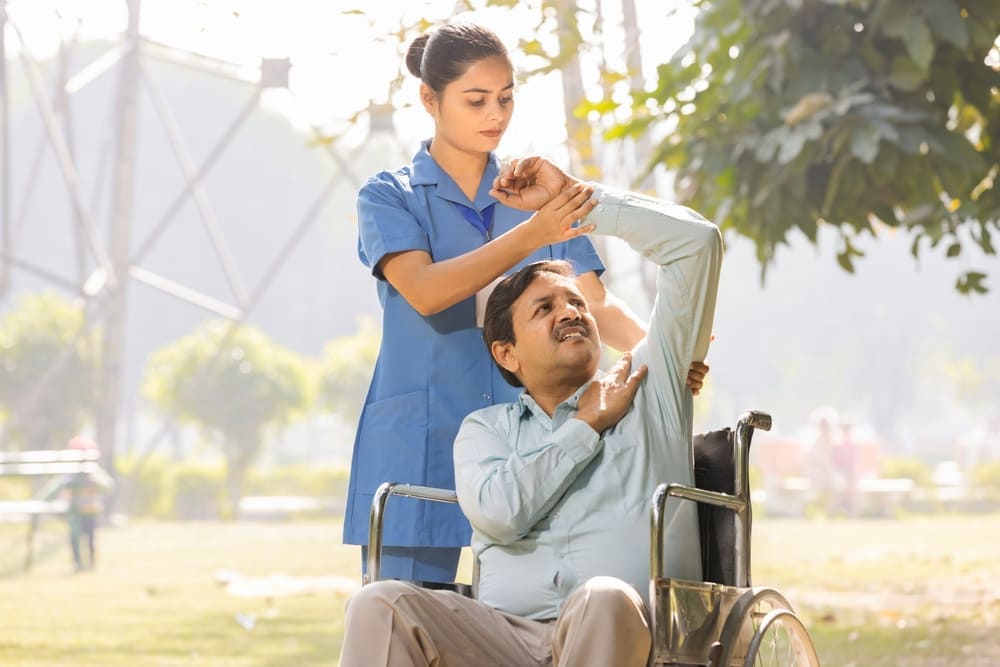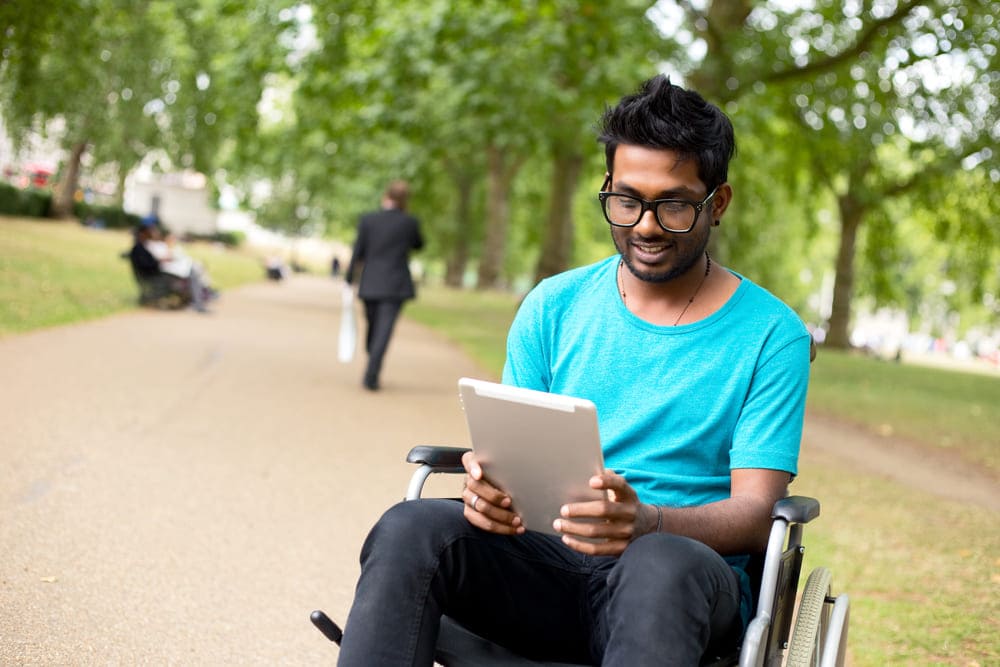


India’s first woman to win a Paralympic gold in Tokyo, as a shooting champion, Avani Lekhara lives the motto her Twitter bio proudly carries: “Life consists not in holding good cards, but in playing those cards you hold well.” That’s an attitude that inspires everybody. As Avani seems to exemplify, if you are differently-abled, there’s no reason why you can’t be stronger, fitter, and more self-reliant.
The beauty of living in today’s world is that there are so many technological advances and equipment – and so much knowledge, awareness, and sensitivity in society – that you can live a near-normal life. You can aspire to excel in your chosen field.
Physical exercise is seen to be at the core of a differently-abled person’s life because it not only revives bodily strength but also rejuvenates the mind, reinforces self-belief, revitalizes energy, and encourages social interactivity. It has many benefits indeed.
We have several thoughts here for those who want a full life without letting anything hold them back. So read on.
According to Ginny Weeks, writing in Patient.info, being active has many benefits for those with physical or mental incapacitation.
Particularly when certain limbs or parts of the body may have limited use, there could be a lot of muscle wasting, long-term immobility, or loss of function – unless physical exercise routines are sustained to keep the body working at its optimum.
Physical exercise can strengthen the musculoskeletal framework, build muscles, strengthen the nerves, ease joints, and increase blood flow and oxygenation to all body parts. It can generally heighten energy and vitality.
There are mental health benefits that come with being fit. Exercise promotes a better sense of well-being. In patients with any chronic medical problem, there is an increased risk of low mood or depression, and fitness is a positive and natural way to help minimize this problem.
Further, even a little regular activity makes it possible to set goals to achieve more and more if the mind cooperates. A physically fit body and an enthusiastic mind go hand in hand. One helps the other.
Fitness is a great activity to engage in at a gym or a class that others also attend. Group exercising enables individuals to meet and bond with a community of like-minded people. Enthusiasm can be infectious.
Many exercise classes now cater simultaneously to people with or without challenges, so there is a universal embrace of the idea that, in the end, we are all equal.
Experts agree that exercises should include muscle strengthening, stretching, toning, and an aerobic component to improve breathing.
According to NaTasha D. Hollis, Ph.D. et al., in their medical paper in the Disability and Health Journal, the percentage of adults aged 18-64 that get no aerobic exercise is higher among individuals with mobility disabilities (57%) than any other disability type.
As Shelly Gigante writes in Mass Mutual, quoting Kelly Bonner, a specialist with the National Center on Health, Physical Activity & Disability (NCHPAD): “An individual with a disability could potentially do any type of physical activity that they desire from Yoga to CrossFit and everything in between.” It depends on what goals people have and what they enjoy.
Here are a few tips that may be useful if you need to get enough exercise to overcome physical or mental limitations. One caveat: Always contact your doctor to give the green signal for the exercise routines you want to try out.
Social media platforms have a great selection of such useful videos. Check out Adaptive Yoga’s channel, which has a vast library of yoga tutorial videos. Though most videos are designed for wheelchair users, many of their resources can help anyone with compromised mobility. The Fit5 Workout Series, from the organization behind the Special Olympics, also has a series of helpful videos that can help physically-challenged individuals to train in endurance, strength, and flexibility.
If you find it easier to learn exercises in face-to-face classes, you can also seek help from a personal trainer or instructor who understands your situation. Your local orthopedic center or hospital may recommend the right trainer for you. Different professional trainers may be specially qualified to work with people having different types of disabilities.

According to Cogenita, to avoid injury, it’s essential to stay with exercises that your body can handle. Build your confidence by starting small and setting yourself some realistic goals. Most importantly, focus on what you can do, and do that much. If you try to emulate those who do what you can’t, you will only put your motivation at stake. At all times, do remember that nothing is worthwhile if it leads to any form of distress.
You can maximize your exercise if your body is well-nourished through a wholesome diet. You shouldn’t have to snack on energy bars or take booster drinks before you exercise. Good food (eaten at regular mealtimes), which is light on fats, rich in lean proteins, and eaten with yogurt, fruits, vegetables, and whole grains, can help give your body the nutrients it needs to stay energized. Trained dieticians can be especially helpful if your disability limits you to a certain kind of diet.
Healthy behaviors matter to the differently-abled as much as they do to anybody. That means getting regular medical checkups, taking medicines on time, sleeping at regular times, and avoiding smoking and drinking. There are no relaxations in these simple rules for a healthy lifestyle for anybody – whatever their levels of physical or mental ability.
According to the Centers for Disease Control and Prevention (CDC), being active in the company of others around you is good for your body, mind, and soul. You also build a safety net for emergencies if your neighbors know how to help you. Go out often – to the local park or library, your local parties or events, or the local shops. Get to meet and greet those who live in the houses around you. Although we cannot yet say our neighborhoods are totally disabled-friendly, we are slowly getting there.

Beyond the challenges to mind and body, people with disabilities may have additional problems if they also suffer from chronic illnesses such as obesity, cholesterol, diabetes, and hypertension. When these ailments combine with other hereditary factors, they can all have a multiplicative effect on the heart.
Regular checkups with doctors are a must, even if they are often difficult for individuals with lower mobility or mental health issues. High diabetes symptoms, signs of high blood pressure, or the adverse effects of obesity need to be kept under control – and a good diet plan to reduce cholesterol is also vital.
The active, energetic zeal with which you live your life can inspire many others to emulate you. How your body is affected is not the whole story about you. It’s all about how your mind perceives it. Or perhaps, how strongly your heart beats for a full and successful life. Stay heart-healthy. Be a Zinda Dil.